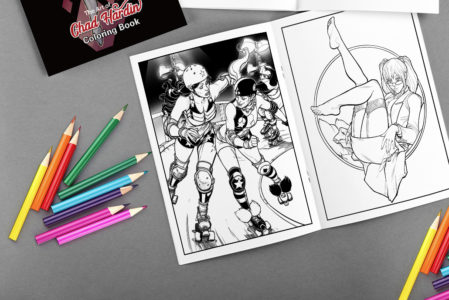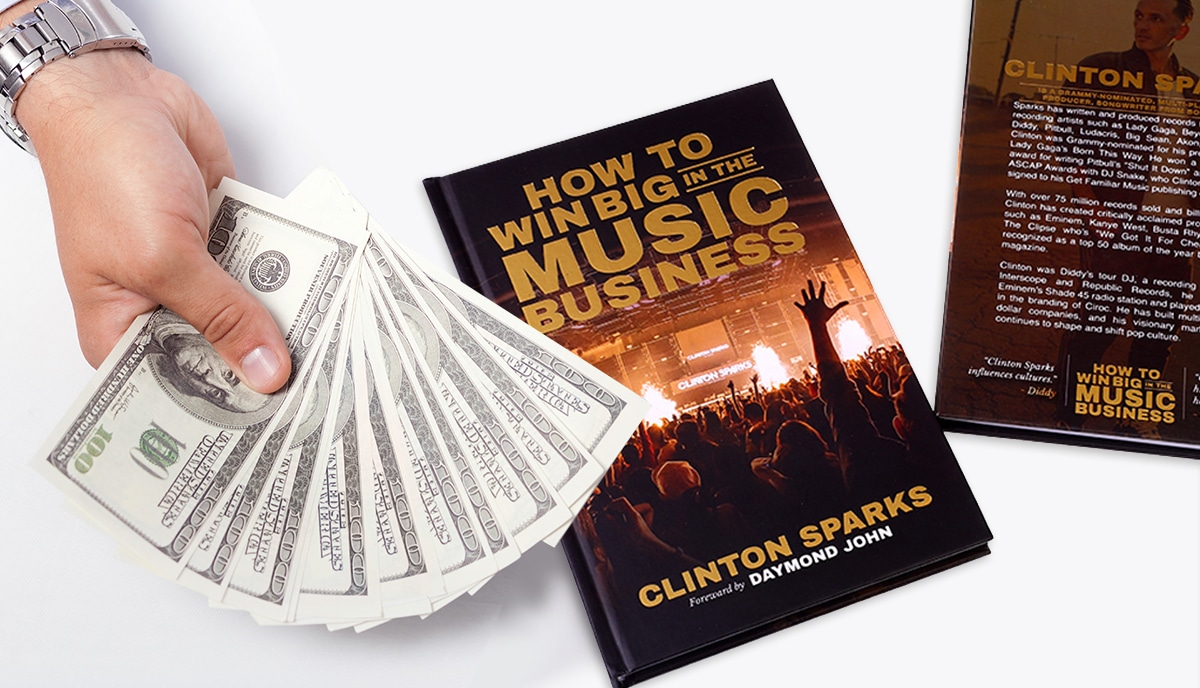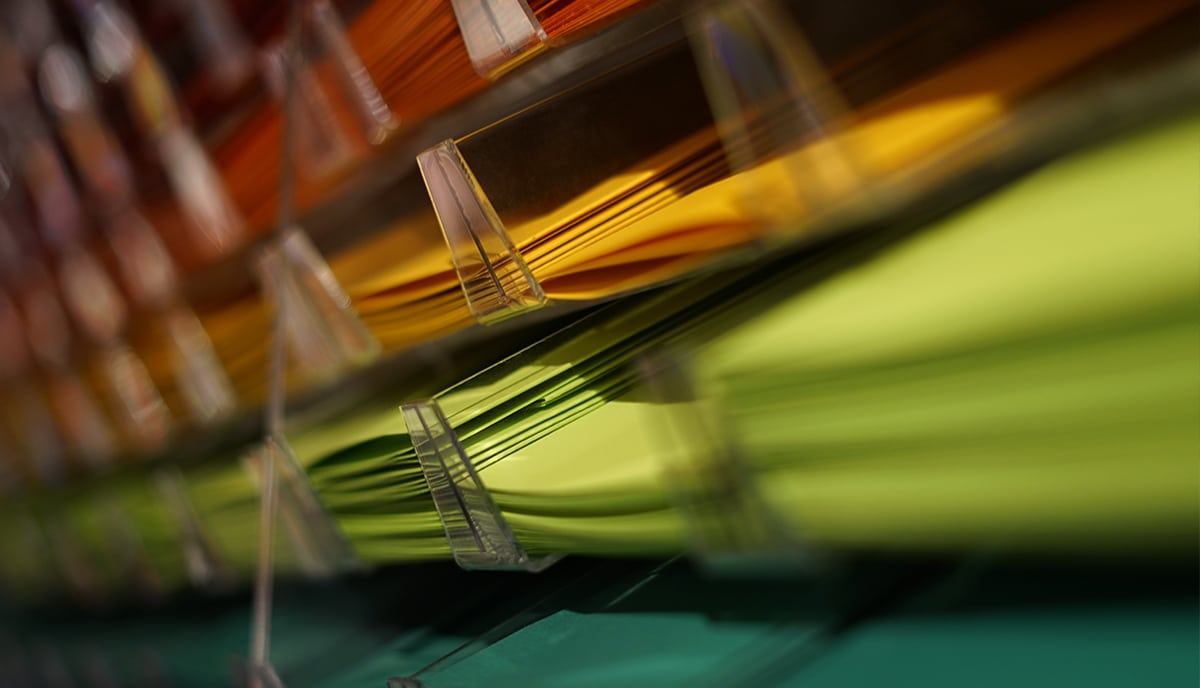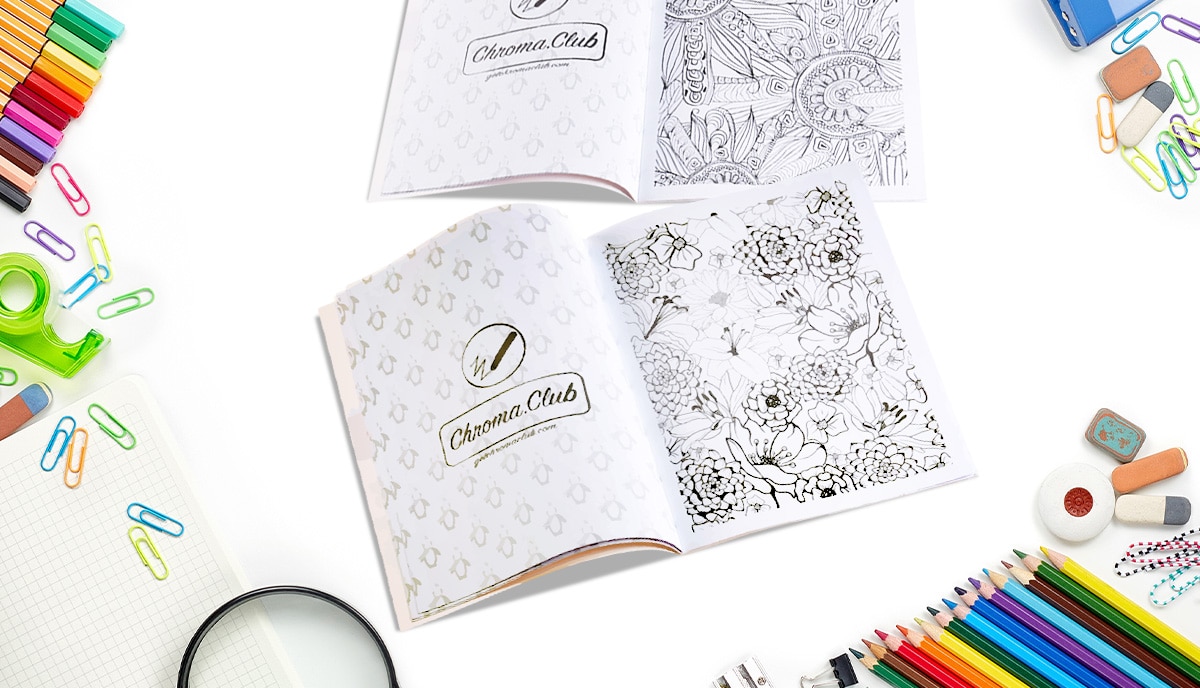Thought the coloring book boom was a passing phase? Wrong! As a leading international offset printer supporting independent creatives, we print lots of these perenially popular books. Here, we share how to create and publish coloring books for profit.
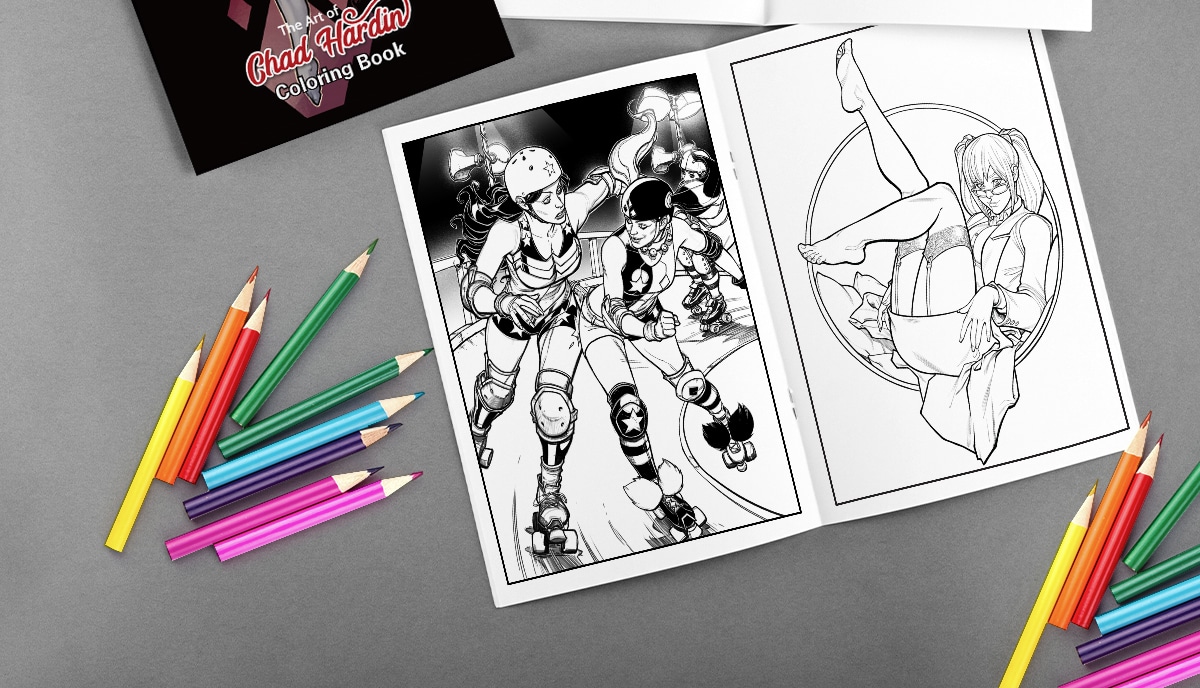
Introduction
Are you passionate about art and looking for a creative way to monetize your skills? You may have heard of the coloring book boom which first exploded on the commercial self-pubishing scene back in 2012 to 2015 with the first release of adult coloring books. Since then, the attention of the popular press has moved on to other things, but that doesn't mean the market has gone away. On the contrary, business is still booming in the coloring book industry. We continue to get a steady flow of printing requests for both adult and children's coloring books, many from repeat-buying customers, and many of them are successful self-publishers and small presses.
Creating and publishing a coloring book can be a lucrative venture that allows you to showcase your artistic talents while generating passive income. It's not all easy when you come to it for the first time, but it's certainly easier than writing, publishing, and promoting a series of novels, say, or a children's picture book series. In this helpful beginner's guide, drawing on over 25 years of knowledge and experience, we'll walk you step-by-step through the process of designing and printing a profitable coloring book. From choosing the right theme to marketing strategies, we'll cover all the essential aspects to help you succeed in the coloring book industry.
The first step is to choose a theme
The first step in creating a successful coloring book is to choose a theme. Why? Simply because all the data shows unequivocally that coloring books with a unifying theme – which could be broad like “Nature”, narrow like “Popular Italian Scooters”, or super-niche like “Bulgarian Postage Stamps of the 1950s”. The important thing is that it resonates with your target audience and it's a theme that you can enjoy developing. At the outset, think about whether you want to create an adult coloring book or one aimed at children. Check out all the popular online stores such as Amazon, Etsy, and eBay and research the current market trends to identify popular themes that have a high demand.
Some popular themes for adult coloring books include mandalas, nature, and inspirational quotes. For children's coloring books, themes like animals, fairy tales, and superheroes often attract young readers. But if you want your coloring books to sell, it's a balancing act between whatever is a popular niche in which books sell and avoiding just copy-catting something that's already on the market. So, if you notice, say that both “mandalas” (abstract circular designs used in meditation) and “nature” are popular, why not design mandalas created from stylized natural forms of plants and animals?
Once you have decided on a theme, brainstorm unique and engaging designs that align with your chosen topic, will give you pleasure to draw, and are just that little bit different from everything else. Remember to stay consistent with your theme throughout the entire book to provide a cohesive and enjoyable coloring experience. That's the point of a theme!
How to create designs for a coloring book
When it comes to actually creating your designs – which for a coloring book should be bold, even if intricate, black-and-white line drawings – you have two options for how to do it. You can draw your original designs by hand, the traditional method; or you can utilize design software to create your images. Almost any good drawing software will do, but we recommend Adobe Illustrator as it will make your life easier when it comes to preparing your digital files for print as you can use vectors which will make your pages easier and smoother to translate into ink on paper.
Traditional Method
If you prefer a hands-on approach, you can start creating your coloring book designs using traditional art supplies. Grab a pen and paper and let your creativity flow. Use a large-tip pen or a black marker to outline your designs, ensuring they are clear and distinct. Experiment with different styles and patterns to make your coloring book visually appealing.
Once you have completed your designs, you'll need to digitize them ready for printing. There are two ways you can do that. One option is to scan them and save them onto your computer. If your originals are small and your home or office scanner is good enough, you can do it yourself. If not, you'll need to take your drawings to a professional studio and get them scanned there.
Otherwise, you can photograph them with a high-quality DSLR camera to create digital copies in standard formats. Again, if you have the equipment and the skills, you can handle this alone. The alternative is to hire a professional art photographer – ideally one with knowledge of the printing industry – to do it for you. Either way, even working with traditional materials, you'll need to digitize your work before we – or anyone else! – can print it.
Digital Method
If you're more comfortable with digital tools, or you're prepared to learn, you can create your coloring book designs using illustration tablets such as an iPad Pro or a Surface Pro. These tablets offer a range of drawing tools and allow for precise and detailed artwork. Use a tablet pen specially designed for digital drawing to bring your designs to life. Again, we recommend Adobe Illustrator (rather than Photoshop) for the reasons already outlined above. If you must export files as bitmaps ( rather than vectors), you'll need to make sure that they're high resolution; so, at least 300 dpi.
Don't worry if you don't consider yourself an artist. There are user-friendly online platforms like Canva that provide pre-made templates and design elements to help you create stunning digital designs even without prior artistic experience. With Canva, you can easily customize and personalize your coloring book pages, making them unique and eye-catching. Another option is to employ a professional graphic artist, explain your vision to them, and let them do the drawing for you.
Whether you go the traditional route, the digital route, do it all yourself, or outsource some of the work to third-party professionals, once you have your completed designs, you'll need to format and create the layout for your actual book. Again, you can outsource this, too. But if you decide to do it yourself, the following hints and tips should help you head off in the right direction. If you choose to print your coloring books with us, QinPrinting, you'll have a named consultant to guide you and access to our expert design team to answer all your questions; not to mention pre-made or custom templates, free file checking, and more.
How to format and design the layout
To format and layout the interior pages and the cover of your coloring book, you'll need to create a template and indicate bleed, trim lines, and safety zones. Once you've positioned your pictures and paginated everything correctly, you can then export the files in PDF format, ready for printing. Remember to import your images as vectors ideally, and if you can't, make sure they're high resolution. You'll need to create a separate file for the cover but the same principles apply.
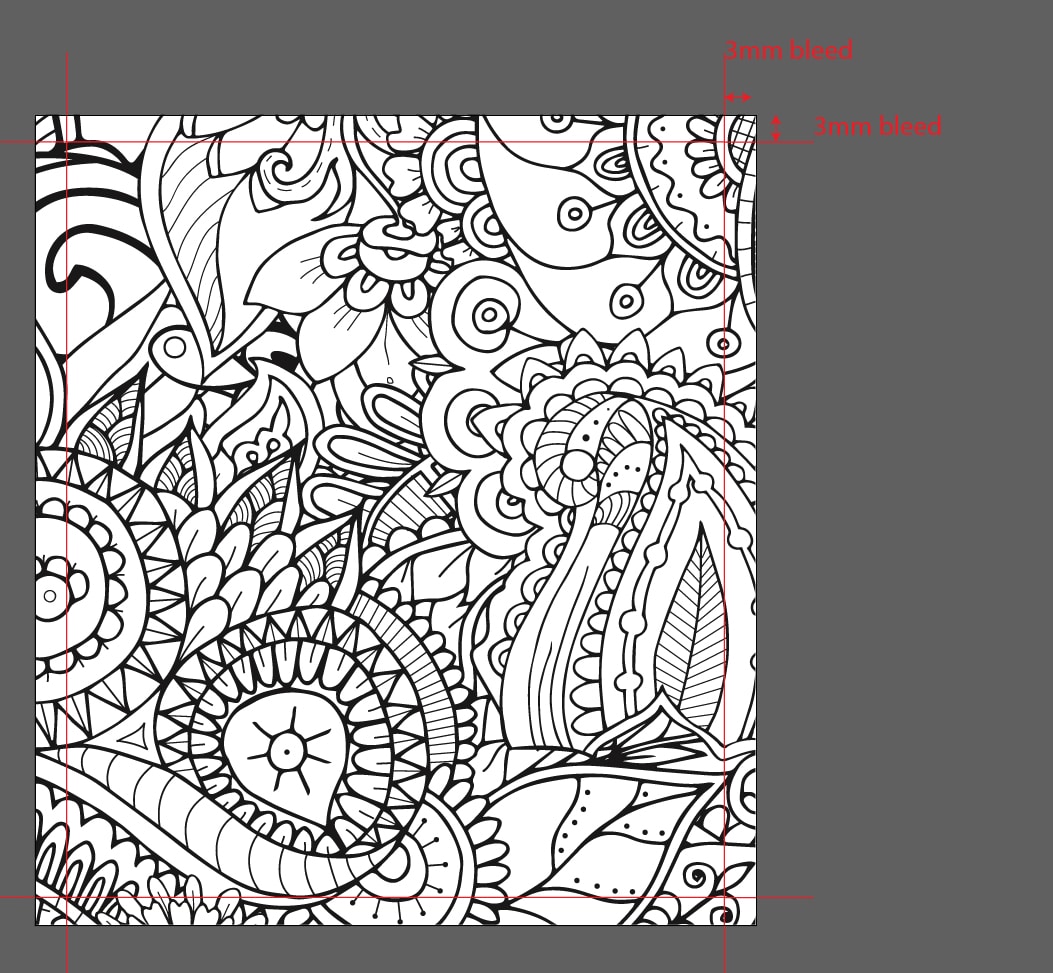
You'll also need to choose the paper options for your coloring book. We recommend uncoated or so-called “wood free” paper for this as it allows for consistent color absorption unlike, say, a gloss paper with which you risk the ink from the user's pens remaining on the surface or the color from pencils not taking at all. If you have very detailed drawings with a lot of intricate detail, then matte paper might work. If you choose uncoated paper stock, the paper must be thick enough to prevent colors from bleeding through to the opposite side. 100 gsm / 68 lb would do if you're counting every penny, but 120 gsm / 81 lb or even 140 gsm / 95 lb will provide better durability and a pleasanter coloring experience.
For the binding, saddle stitching is a popular option for coloring books of 48 pages or fewer. If your book has significantly more pages than that, say from 50 to several hundred, then perfect binding is the best, most professional, and most economical option for you. Perfect binding is also known as softcover or paperback binding. Other options might be spiral bound or hardcovers, but that would be an unusual choice for a coloring book.
The best way to print a coloring book
When it comes to printing your coloring book, you have several options to consider. While platforms like Amazon offer print-on-demand services, they may not always provide the best quality or competitive pricing. What works okay for a first-time genre novelist who anticipates the lion's share of their income to come from ebook sales, won't necessarily cut the mustard for a project like a coloring book which not only needs to be printed but may well demand customization – larger sizes, alternative binding options, and cover choices, for example – that POD just can't handle. As we know because we work with them every day, many successful independent sellers prefer working with offset printers for professional-quality results.
Consider ordering a short run of 100 copies initially to test your marketing and sales strategies. This approach allows you to evaluate the demand for your coloring book before investing in larger print runs. And remember that with digital printing, the price-per-copy stays the same no matter how many you order in a single print run. Whereas, with offset printing, as the number of copies increases, the cost-per-unit decreases, maximizing your profit margin.
When selecting a printing service, look for one that offers high-quality printing, uses premium paper, and provides reliable customer service. Research reputable printing companies that specialize in coloring book production, and request samples before making a final decision. Of course, we offer all of that and more. By all means “shop around”. But our solid international reputation for excellence is built on dedication, expertise, genuine customer care, and state-of-the-art printing technology combined with the most competitive prices on the planet. Just sayin'!
How to price your coloring book
Determining the right price for your coloring book is crucial to attracting customers while making sure that you still cut a reasonable profit margin. Consider factors such as the complexity and quality of your designs, the number of pages, and the overall production costs per copy. You'll need to decide how much pure profit (after deducting production costs, taxes, and professional fees) you need to make from each sale to justify your efforts financially. You'll then need to balance that with what the market will support. You will almost certainly need to accept a lower profit margin when you start out as you'll need to compete with others who've been in the business from the start and have already grown their assets, email list, and visibility. But if you have any success at all on your first publication (ie, you don't make a loss) you're in a strong position on which to build a viable business.
But before you start out, we strongly recommend that you research the market and analyze the pricing of similar coloring books to get an idea of the price range. Keep in mind that pricing too high may deter potential buyers, while pricing too low may undervalue your work. Strike a balance that reflects the value you offer while remaining competitive in the market and choosing a figure that's viable. A standard business strategy when you want to break into a new and competitive market is to start with the ambition simply to “break even”. At that stage, you're more interested in gathering data, attracting customers to your list, and carving out a niche on your chosen distribution platforms. So, let's look at marketing and promotion next.
How to market and promote coloring books
To maximize the sales potential of your coloring book, it's essential to implement effective marketing and promotion strategies. Exactly what will work best for you depends on several factors; your audience, your ambition, and your budget above all else. Several strategies cost nothing but time and effort, while others can get quite expensive. Still, here are some ideas that we've seen working, just to get you started thinking along the right lines:
- Establish an online presence: Create a website or a dedicated page on platforms like Etsy to showcase your coloring book. Include high-quality images, detailed descriptions, and customer reviews to build credibility.
- Leverage social media: Utilize platforms like Instagram, Facebook, and Pinterest to share sneak peeks of your designs, engage with potential customers, and run targeted ad campaigns.
- Collaborate with influencers: reach out to influencers or bloggers in the coloring book niche and offer them a free copy of your book in exchange for a review or promotion on their platforms.
- Offer free samples: Consider offering a few free coloring pages as a preview of your book. This can entice potential buyers and give them a taste of your unique designs.
- Attend craft fairs or book events: Participate in local events or book fairs where you can showcase and sell your coloring book directly to interested customers.
When you're getting started, it's a good idea to experiment with a range of options to discover what works well for your specific needs. If you're going the blogging and social media route, remember to engage meaningfully with your audience, gather feedback, and adapt your marketing strategies accordingly. Unless you come from a marketing background, this is probably the steepest part of the learning curve and there's no “one size fits all” solution.
How to expand your coloring book business
Once you have established a successful coloring book, you can expand your business by creating a series or a collection of coloring books. In fact, we'd say, don't wait for the first one to ‘take off' before you start work on the next one. Building a back catalog of several titles allows you to cater to a wider audience and increase your sales potential right from the start. Most self-publishers see a spike in sales on their third, fifth, and tenth releases.
And you needn't only sell your coloring books. Consider diversifying your offerings by exploring related merchandise such as colored pencils, markers, or even DIY coloring kits. This not only adds value for your customers but also provides additional revenue streams for your business.
Tracking sales and analyzing data
To make informed decisions and optimize your coloring book business, it's crucial to track sales and analyze data. Most platforms online – such as the Amazon, Etsy, and Ebay stores, have built-in analytics tools. If you run a website and blog, WordPress and Google both offer excellent analytics. When it comes to offline sales, you'll need to keep books in the old-fashioned way; although, of course, there are plenty of available apps that can help you keep account of your business “ins and outs”. Use all these analytics tools to monitor sales performance, identify popular designs, and understand customer preferences.
Pay attention to customer feedback and reviews to improve your coloring books and cater to the evolving needs of your target audience. Stay updated with industry trends and adapt your designs and marketing strategies accordingly. While the income might be “passive” once you have a significant number of publications out there in the marketplace, there's nothing passive about running your business and we'd be lying if we told you otherwise.
Legal considerations
If you're creating your own original artwork from scratch, you have no legal issues. But if you're employing a third-party creator or taking images from stock sites or the various wiki commons properties, you need to make sure you don't contravene copyright laws. So make sure that you have the necessary copyrights or licenses for any images or designs used in your coloring book. Research copyright laws and consult with a legal professional if needed to make sure you are in compliance with intellectual property regulations.
Consider registering your business, too, and obtaining the required permits where necessary, and familiarizing yourself with tax obligations. Protecting your intellectual property and running your coloring book business legally will provide peace of mind and safeguard your hard work.
Let's talk!
Creating and publishing a profitable coloring book is an exciting and rewarding endeavor. By selecting a captivating theme, creating engaging designs, and implementing effective marketing strategies, you can turn your passion for art into a thriving business. Remember to stay consistent with your brand, listen to customer feedback, and continuously innovate to stay ahead in the competitive coloring book market. Start your coloring book journey today and unleash your creativity while potentially generating a sustainable income.
It seems like quite a lot of work — and we can't guarantee your success as there are too many variables involved – but it needn't be either a great risk or too challenging so long as you act sensibly and keep to your budget. As soon as you're ready to get started, get in touch. We can't wait to help you with free advice about the technical and material options that will best fit your project, such as bindings, paper choices, cover options, and more before we go on to print your book. Let us help you fill in the outlines of your idea!





